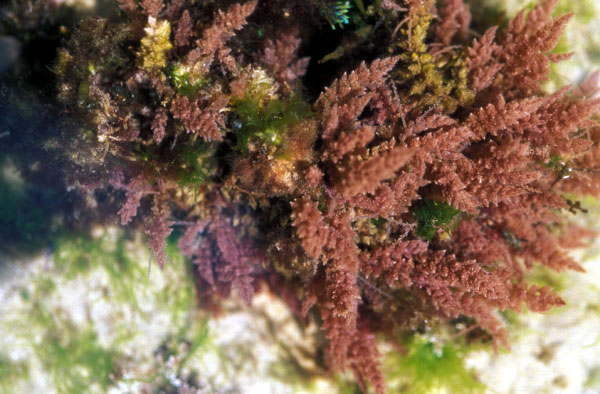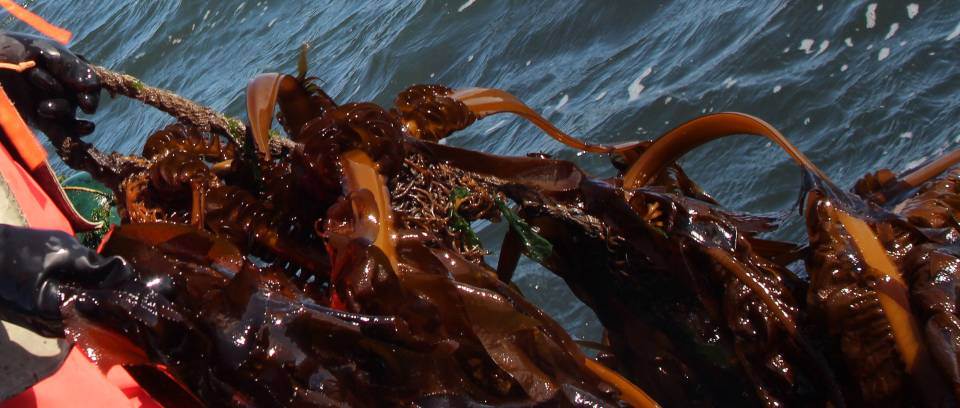Integrated Multi-Trophic Aquaculture (IMTA) systems are designed to mitigate the environmental problems caused by several forms of fed aquaculture. Gracilaria chilensis is commercially cultivated in Chile and experimental studies recommend it as an efficient biofilter in IMTA systems. Traditional bottom culture Gracilaria farms face production problems mainly related to the cultivation system and seasonal changes in nitrogen availability and irradiance. IMTA may offer a solution to some of these problems.
This study intended to investigate the productivity of G. chilensis near salmon farms and assess its nitrogen removal and photosynthetic performance. The most appropriate cultivation methodologies (i.e. floating long-lines vs. bottom cultivation) for Gracilaria production were also evaluated. During austral summer and autumn, 3 long-line cultivation units were set at different distances from a salmon farm, one of them being away from the influence of salmonid aquaculture. Additionally, a similar cultivation unit was installed as a traditional bottom culture.
Gracilaria growth performance was always higher on the suspended cultures near the salmon cages. Summerdaily mean growth rates at those sites reached 4% (±0.29) with a mean biomass production of over 1600 gm−2 month−1(±290) which was double the unimpacted site. The productivity of bottom cultured Gracilaria was highly reduced by biomass losses. N removal and photosynthetic performances provided possible explanations for the differences found. The long-line cultivation unit proved to be the most efficient technology for nutrient removal with monthly removal of up to 9.3 g (±1.6) N per meter of long-line.
The proximity to the salmon farm also mitigated the decrease in photosynthetic activity after the midday irradiance peak. G. chilensis at those sites maintained daily average values of ΦPSII around 0.6 and rETR close to 40 μmol e− m−2 s−1. Fv/Fm values (0.6) were similar at all cultivation areas. Our results clearly indicated the advantages of integrating G. chilensis aquaculture with salmon farms. Within the IMTA system, the productivity and physiological performance of G. chilensis ere greatly improved and this seaweed's biofiltration efficacy was confirmed. We suggest that a 100 ha G. chilensis long-line systemwill effectively (ca. 100%) reduce the N inputs of a 1500 tonnes salmon farm.





